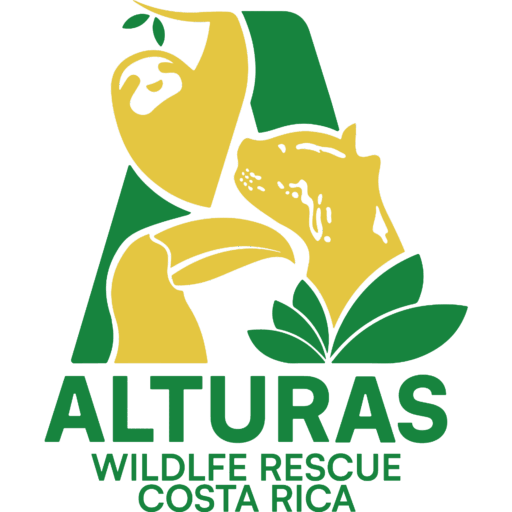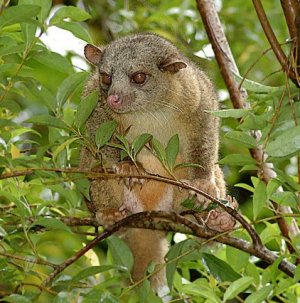The Northern Olingo is a tree-dwelling member of the family Procyonidae, which also includes raccoons. It is a slender arboreal animal, with hind legs distinctly longer than the fore legs, and a long, bushy tail. The face is short and rounded, with relatively large eyes and short round ears.
Olingo
Taxonomy: (Bassaricyon gabbii)
Spanish Name: Olingo, but sometimes the word martilla (the Spanish word for Kinkajou) is also used
Other Common Names: Northern Olingo; Bushy-tailed Olingo
Conservation Status: Least Concern
Lifespan: The lifespan of wild Olingas is not well known, but some reports indicate captive Olingas have been known to live up to 25 years. Estimations are that wild Olingas live approximately 10 years.
Distribution: Northern Olingos are found in forests from northern Nicaragua to Panama.
Habitat: Common in cloud forest; uncommon elsewhere.
Behavior: Northern Olingos are found in forests from northern Nicaragua to Panama.
Weight: 1.5 kg
Diet: Olingos eat nectar and fruit (especially figs), and will eat both invertebrates and small vertebrates. It is possible that they are more carnivorous than their close cousins, the Kinkajou.
Reproduction: Although not extensively studied, it is believed that Olingos are not very social except during mating season. Gestation of their young takes about two and a half month, and usually produces one offspring in the dry season. They are able to reproduce starting at the end of their second year.
Threats: Deforestation is the Olingo's primary threat. Thankfully, hunting is not a big concern for these animals.

